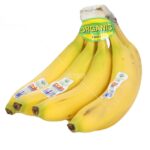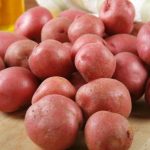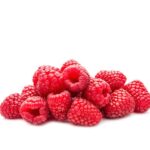Bananas Organic – platano tabasco
35.3 oz / 1 kg
- Description
Description
Deciding whether to buy organic or conventional bananas is a toughie. Organic ones are more expensive (usually at least 30 cents more per pound), and I’ve noticed that they seem to bruise more easily – anyone else notice that, too? The major difference between the two are that conventional bananas are grown with synthetic fertilizers, insecticides, and herbicides to protect the crops from mold, bugs, and disease. On the other side, organic farmers use natural fertilizers such as manure and seaweed, insect predators and barriers to prevent pests, and they weed by hand or mulch in order to prevent weeds. You may be thinking that all those chemicals used to grow conventional bananas are no big deal because you peel the fruit. But the chemicals are not just on the outside of the banana — they leach into the soil that is used to grow the produce. So even if you peel your banana, it doesn’t prevent you from ingesting small amounts of those chemicals. Although you may feel better knowing most experts agree that the amount you ingest poses little threat to your health. If you’re concerned about the nutritional value of your food, there are ongoing studies exploring the connection between pesticides and nutrients in foods; so far it looks like organic is healthier. Organic produce is also better for the planet since chemical pesticides make their way into the soil and run off into water sources. With the sky-rocketing prices of food, buying organic may not be feasible all the time. Bananas, along with avocados, mangos, papayas, and pineapples have been found to have the lowest pesticide residue. However, apples, cherries, grapes, nectarines, peaches, pears, raspberries, strawberries have very high pesticide residues so you might want to splurge on organic. ****************Decidir si comprar bananas orgánicas o convencionales es una tarea difícil. Los orgánicos son más caros (generalmente al menos 30 centavos más por libra), y he notado que parecen tener moretones con más facilidad, ¿alguien más lo notó también? La principal diferencia entre los dos es que los bananos convencionales se cultivan con fertilizantes sintéticos, insecticidas y herbicidas para proteger los cultivos del moho, los insectos y las enfermedades. Por otro lado, los agricultores orgánicos utilizan fertilizantes naturales como estiércol y algas marinas, insectos depredadores y barreras para prevenir plagas, y desyerban a mano o con mantillo para prevenir las malas hierbas. Quizás esté pensando que todos esos productos químicos que se utilizan para cultivar bananas convencionales no son gran cosa porque pela la fruta. Pero los productos químicos no se encuentran solo en el exterior del banano, sino que se filtran al suelo que se utiliza para cultivar los productos. Entonces, incluso si pela su plátano, no le impide ingerir pequeñas cantidades de esos químicos. Aunque puede sentirse mejor sabiendo que la mayoría de los expertos están de acuerdo en que la cantidad que ingiere representa una pequeña amenaza para su salud. Si le preocupa el valor nutricional de sus alimentos, existen estudios en curso que exploran la conexión entre los pesticidas y los nutrientes en los alimentos; hasta ahora parece que lo orgánico es más saludable. Los productos orgánicos también son mejores para el planeta, ya que los pesticidas químicos penetran en el suelo y se escurren a las fuentes de agua. Con los precios vertiginosos de los alimentos, es posible que comprar productos orgánicos no sea factible todo el tiempo. Se ha descubierto que los plátanos, junto con los aguacates, mangos, papayas y piñas tienen el menor residuo de pesticidas. Sin embargo, las manzanas, cerezas, uvas, nectarinas, melocotones, peras, frambuesas, fresas tienen residuos de pesticidas muy altos, por lo que es posible que desee derrochar en orgánicos.














